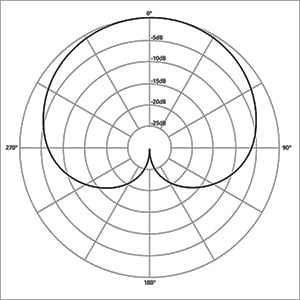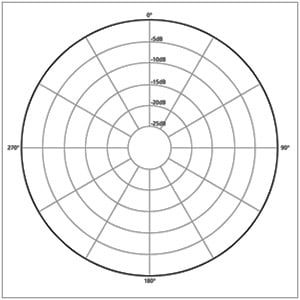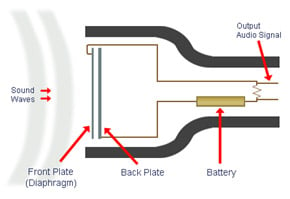- __________ is credited as the inventor of the microphone.
Your Answer: Alexander Graham Bell - ______________ microphones use a capacitor. Voltage is created by the diaphragm changing the distance between two plates.
Your Answer: Condenser - ____________ is a voltage that powers some of the components in most condenser microphones. It is usually a button that is pressed on a pre-amp or mixing console.
Your Answer: Phantom power - ____________ microphones use a corrugated piece of metal suspended in a magnetic field. Voltage is created through induction.
Your Answer: Ribbon - _______________ refers to the difference between what frequencies a performance is actually transmitting, to what the microphone is capturing.
Your Answer: Frequency Response - ___________________ invented the condenser microphone in _______.
Your Answer: Edward Christopher Wente, 1916 - The popular ribbon microphones the RCA 77 and the 44 were invented by _______________.
Your Answer: Dr. Henry F. Olsen - _____________ microphones use a diaphragm attached to a moving coil that surrounds a magnet. Voltage is created through induction.
Your Answer: Dynamic - _________________ invented the transverse current carbon microphone in the early 1920s.
Your Answer: Georg Neumann - _______________is defined as the alteration of the original shape (or other characteristic) of something, such as an object, image, sound or waveform.
Your Answer: Distortion - What polar pattern is pictured here?

Your Answer: Cardoid - The first microphone was called a ______________.
Your Answer: liquid transmitter - What polar pattern is pictured here?

Your Answer: Omni-Directional - What type of microphone circuit is pictured here?

Your Answer: Condenser
 Elena Safavi — Berkeley Recording Connection
Elena Safavi — Berkeley Recording Connection
More Blog Entries from Elena Safavi
Elena Safavi
CHAPTER 7 - Tracking PLANNING – list of names of band members & instruments they play, names of songs you will be recording, specific instrumentation, tempos, keys, meters, song lengths, listen to previous recordings of the band to get an idea of their sound, ask for examples to get mood/aesthetic they want What compressors and EQs will you use and where? What preamps will you pair with which mics? Input lists/plot charts What elements will you track live/what will be overdubbed? MIC SELECTION – May even consider recording each instrument separately in a series of overdubs, using only your best mics? If more elaborate mic options, match the source to the mic that creates the desired color and texture Think about big picture/feeling you want to create Texture of music Sense of space Frequency response, pick-up pattern, sensitivity, transient response of a mic Experiment, use your ears, use what sounds good DYNAMICSs – Sound a bit tighter, a bit less open More dead than a condenser mic Can help give more separation of tracks & allow for more control in post Small diaphragm condensers have tighter pickup pattern and look at a smaller area than large condenser mics – can be helpful when recording instruments close to each other Large diaphragm captures everything in a room, bring out detail of voice, have more bass response than small diaphragm (figure 8 and omnidirectional are going to pick up more bleed & feel much farther away than a cardioid) if you come across an instrument you haven’t worked with before, don’t be afraid to ask the musician about what they usually do or what has worked well in the past Things to keep in mind when making a PLOT MAP- Line of Sight: can the musicians see each other? Angle: angle instrument so it is neither parallel/perpendicular to the walls... Read More >>
Elena Safavi
__________ is credited as the inventor of the microphone. Your Answer: Alexander Graham Bell ______________ microphones use a capacitor... Read More >>

